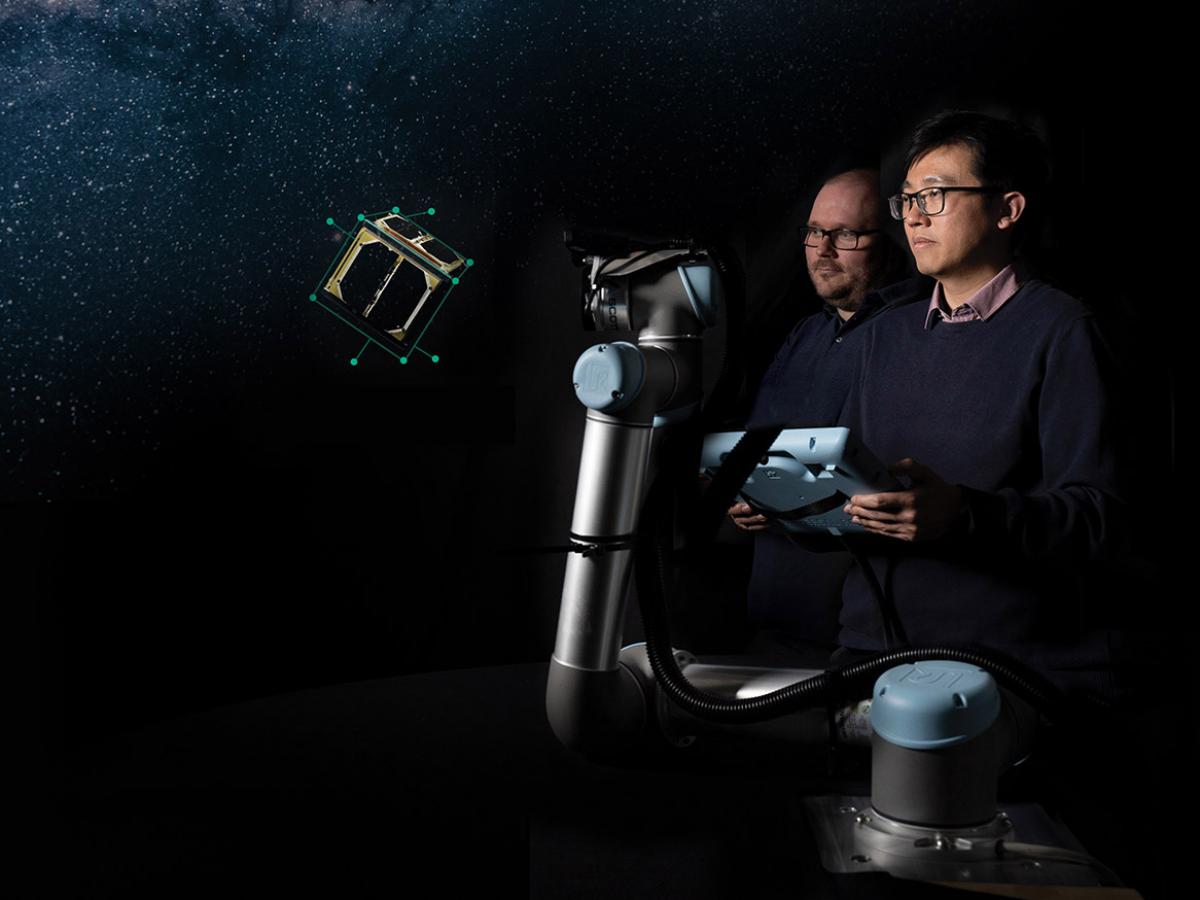Robotics and Autonomous Systems, Artificial Intelligence and Space

Australia is a large landmass with a relatively small population and so capabilities that deliver asymmetric advantage are vital.
Robotics and autonomous systems (RAS) capability and the ability to use artificial intelligence (AI) to operate these are critical to defending our nation in the land, maritime, air and space domains.
To ensure these capabilities are used to maximum effect, we need a deeper understanding of how these systems work, both autonomously and in teaming arrangements with other autonomous systems and human operators.
Our CADR in Robotics and Autonomous Systems (CADR-RAS) allows us to develop a deeper understanding of autonomous systems, how we can make them more robust by identifying how we can help them develop and demonstrate spatial and contextual awareness, and ways we can interrogate and display the information they gather to create the required level of trust between the system and its human operator.
CADR-RAS is directly linked with the Defence Trailblazer, a University of Adelaide-led initiative, and the Trusted Autonomous Systems Defence Cooperative Research Centre (TAS-DCRC). Both accelerate research outcomes into prototypes, products and services, and ultimately, defence capability.
This CADR also facilitated the Robotics and Autonomous Systems Lab at the Australian Defence Force Academy (ADFA) to ensure our future military leaders understand their capabilities, strengths and weaknesses.
With a current investment by the Department of Defence of $6.8m, and 19 projects partnering with 9 universities across Australia, CADR-RAS brings to bear the collective experience and knowledge of the national academic RAS research community.
Research projects
Simultaneous location and mapping in autonomous vehicles
Robotic and autonomous vehicles are valuable defence assets as they can undertake operations which present increased risks to personnel, such as entering contested or contaminated areas where they can gather information, or act as relay points for communication systems.
Read more about Simultaneous location and mapping in autonomous vehiclesBuilding successful hybrid human/AI teams
As we increasingly embed Artificial Intelligence (AI) into defence capabilities, we must understand how AI agents and humans can work together.
Read more about Building successful hybrid human/AI teamsContextual awareness training for autonomous systems
Many algorithms used to train autonomous systems are based on variations of existing thresholds rather than truly unexpected new data.
Read more about Contextual awareness training for autonomous systemsIncreasing space domain awareness
There are thousands of satellites operating in the Earth’s orbit, some of which provide communications, navigation and other critical functions to our defence and security forces.
Read more about Increasing space domain awareness



